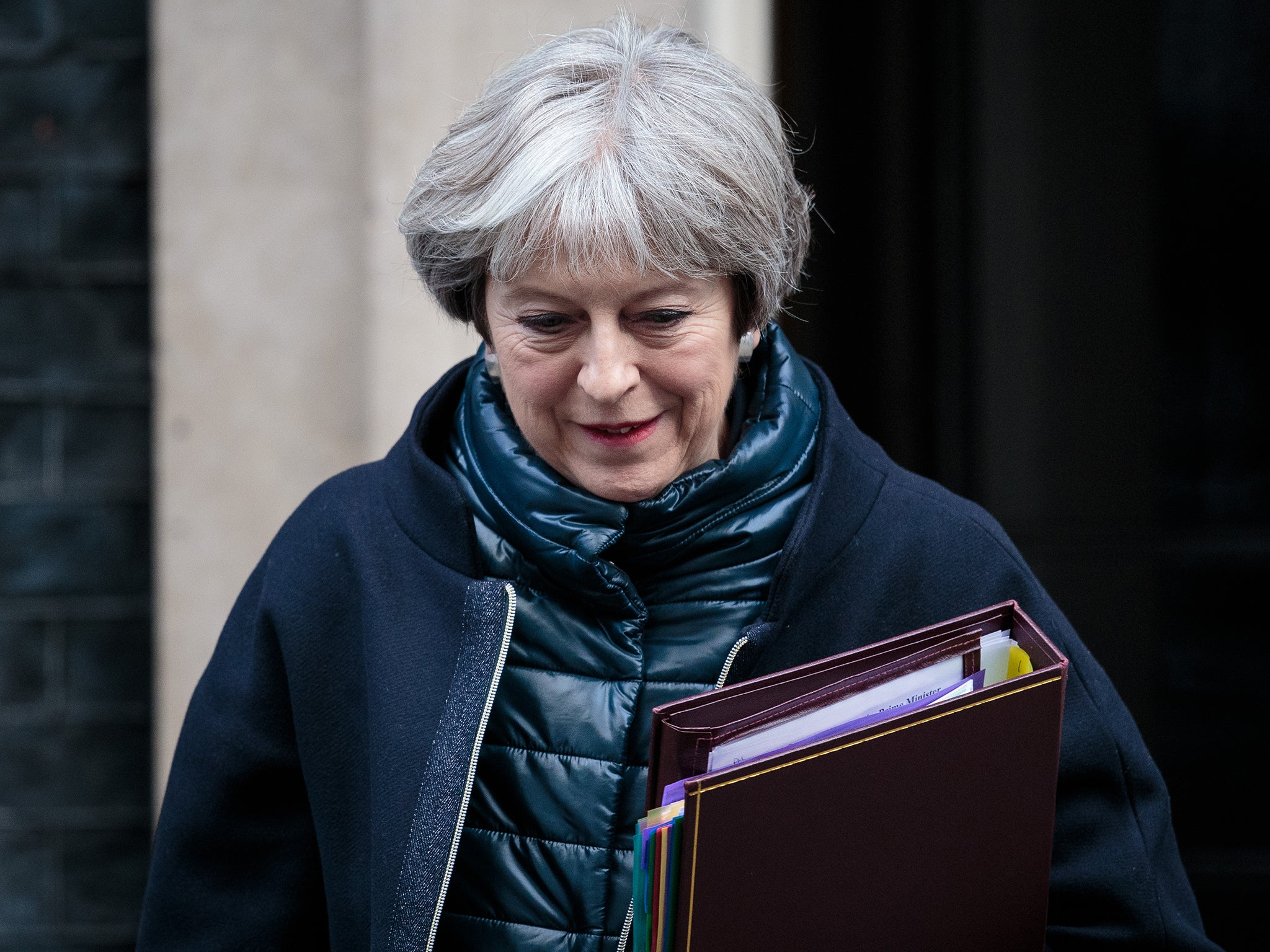Theresa May's reshuffle isn’t going to help revitalise the ailing Tory machine
In an era of wage stagnation, the Tories will have a future only if they curb the worst excesses of capitalism and give the country a sense of hope about a fairer economic settlement


Your support helps us to tell the story
From reproductive rights to climate change to Big Tech, The Independent is on the ground when the story is developing. Whether it's investigating the financials of Elon Musk's pro-Trump PAC or producing our latest documentary, 'The A Word', which shines a light on the American women fighting for reproductive rights, we know how important it is to parse out the facts from the messaging.
At such a critical moment in US history, we need reporters on the ground. Your donation allows us to keep sending journalists to speak to both sides of the story.
The Independent is trusted by Americans across the entire political spectrum. And unlike many other quality news outlets, we choose not to lock Americans out of our reporting and analysis with paywalls. We believe quality journalism should be available to everyone, paid for by those who can afford it.
Your support makes all the difference.They say that every crisis is an opportunity, but Theresa May managed to turn the opportunity of her Cabinet reshuffle into something of a crisis. Even one aide admitted: “In the end, typically, it was a case of muddling through.”
It wasn’t really a proper Cabinet shake-up, without any change in the top jobs of Chancellor, Home Secretary or Foreign Secretary. May would have liked to move Boris Johnson, who is plainly unsuited to the Foreign Office, but he dug in and she backed down.
If May were a company, she would face a charge of mis-selling, or at least over-selling, the reshuffle. Her aversion to “spin” may be admirable but is a necessary tool of her trade; media reports about wide-ranging changes went unchallenged, so when they came, the Cabinet-level appointments were underwhelming.
Although May’s advisers were summoned to a meeting about the reshuffle last Friday, proper planning was not carried out. It is remarkable that she did not know in advance that Jeremy Hunt, a close ally, would fight to stay at the Department of Health.
It is true that day two of the reshuffle was smoother than day one, but it could hardly get worse. The “male, pale and stale” middle and junior ranks of the Government were cleared out. 38 of the 120 ministers are now women – still only a third – and the number from ethnic minorities rose from five to nine. This is overdue and welcome, but merely trumpeting the figures will not win over any voters.
One of May’s key aims was to revive an ailing Conservative Party machine. The new, younger team May sent to party HQ includes some real talent – but faces a massive task. The Tories are believed to have 70,000 members, down from 250,000 in 2005. Labour now has 570,000. Some 44 per cent of Tory members are over 65, and a quarter did nothing for the party at last June’s election, according to new research by Queen Mary University.
It found that Labour lead the way, with a minimum of 1.4 million “campaign activities” by its membership in the election, compared to 323,320 by Scottish National Party members, 264,180 by Liberal Democrats, and just 262,150 by Tory members.
The Tories were outgunned by Labour on social media last June: a watershed election in which the traditional influence of the mainly Tory newspapers waned. Today Jeremy Corbyn has 1.69m followers on Twitter and 1.38m on Facebook. May’s figures are 456,000 and 452,000 respectively.
The excitement over Corbyn created a movement, and at little or no cost as people shared media articles and party ads and videos, removing another Tory advantage – on money. The new team at Conservative Campaign HQ, including the deputy chairman James Cleverly, understand the new media and the need for a digital fightback.
Ben Bradley, the new vice-chairman for youth and first Tory MP for Mansfield, wrote last month: “What Corbyn has in abundance is authenticity, and very clearly a passionate belief in what he’s saying. Meanwhile the Conservatives have become too wooden, too ‘robotic’, as many commented after June’s election. We are much less effective at sharing our passions and our commitment, and at talking about the values that guide us.”
He is right, but it won’t be easy. Social media will be a powerful weapon for Labour in targeting key voters in marginal seats. Whenever the next election comes, Labour will be insurgents and the Tories the establishment, even with a new leader. The digital war is easier to wage in opposition, and easier still if you have a clear, bold message like Corbyn, such as to end austerity. Compare that to May’s cautious slogan on the economy – “a balanced approach”. That won’t fly on social media.
The new generation of Tories will get their act together. But any media strategy is only as good as its message, and that will be determined by what the new ministerial team can achieve.
May wants to return to the social justice agenda she mapped out on becoming Prime Minister. But there has been very little action on it in the past 18 months.
Even a revitalised Tory operation will only win back the under-45s if the Government acts on policy issues such as home ownership; generation rent; student debt and public services like the NHS. Above all, in an era of wage stagnation, the Tories will have a future only if they curb the worst excesses of capitalism and give the country a sense of hope about a fairer economic settlement.
The Prime Minister wants her government to be about “more than Brexit”. But there is precious little sign of it while the Brexit shadow looms so large, leaving little energy or capacity for much else. The reshuffle won't change that.
Join our commenting forum
Join thought-provoking conversations, follow other Independent readers and see their replies
Comments